Loading...
From minaret-studded skylines and monumental edifices to dramatically sculpted rocky valleys and endless sparkling turquoise coastlines, Turkey is a smorgasbord of eye-popping wonders. Exquisite crafts, ancient empires, rich lineage and delectable cuisine come together in a unique cornucopia of offerings in an extraordinary country, that truly epitomizes a melting pot of eastern and western cultures, like no other can. Journey to the land of the Bosphorus, Bazaars and Baklava!
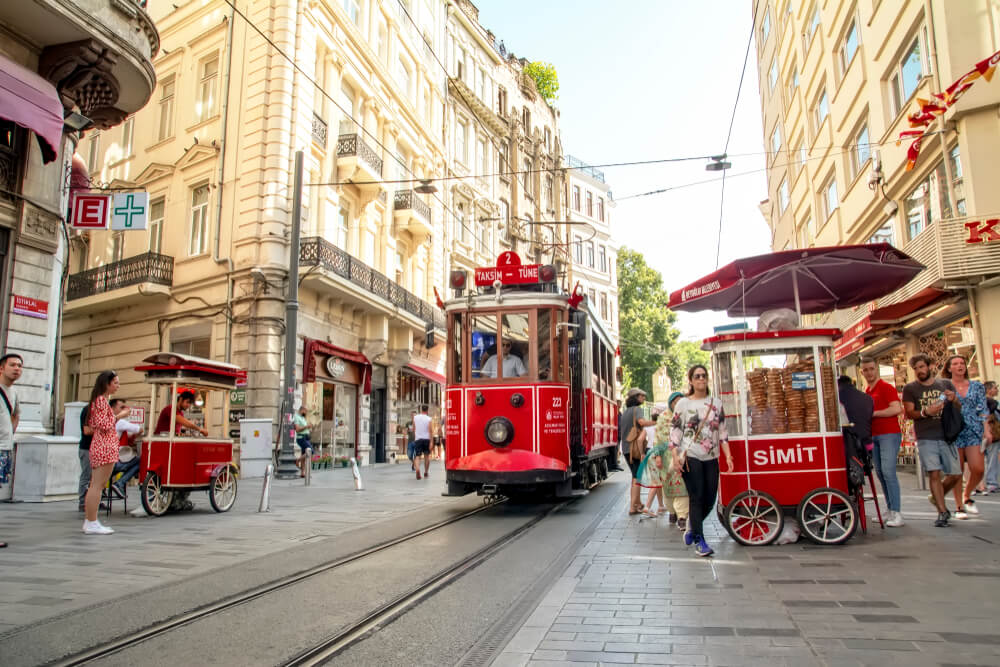
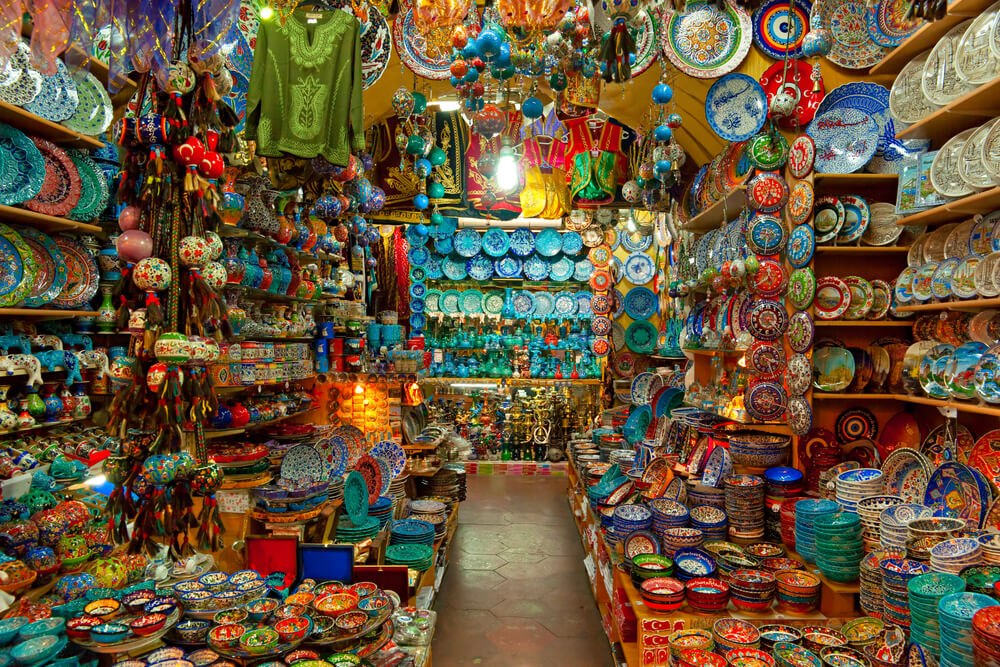
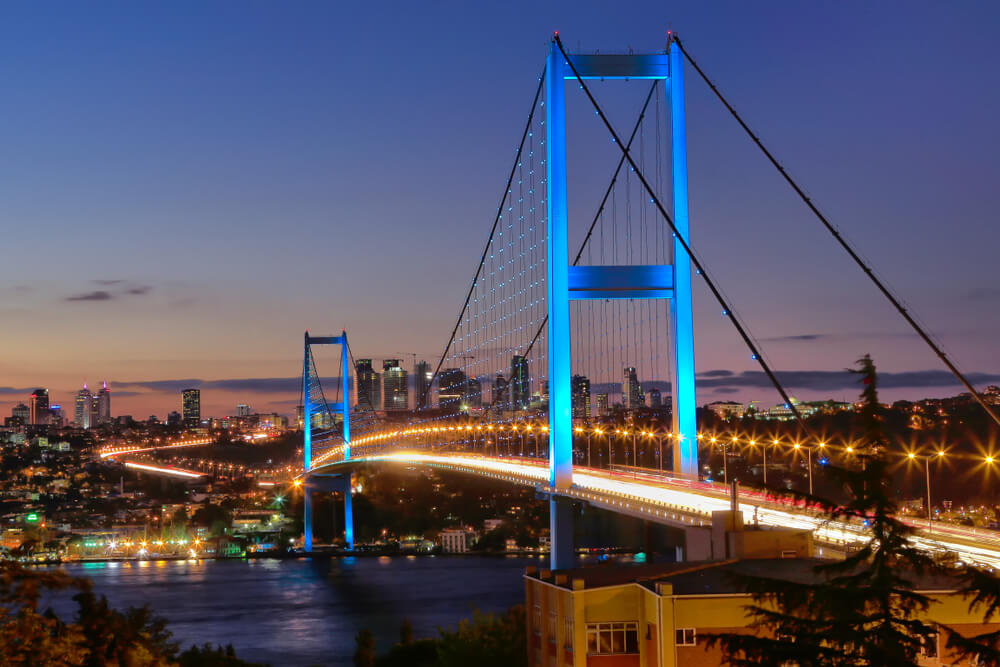

April to September

12 Days

Beaches, Food & Shopping, History & Architecture, Nature & Landscape

Luxury and High-end boutique hotels

Kickstart the Istanbul itinerary at the old quarter of Galata, where neoclassical architecture defines the atmosphere around the medieval Galata Tower and ascend to the top for an epic cityscape. Set the mood right in the pedestrian shopping mecca, Istiklal Avenue lined with Art Nouveau buildings all the way to the epicentre of the area, Taksim Square. Satisfy literary urges at The Museum of Innocence displaying collectables of author, Orhan Pamuk, and dance the evening away at a hip bar in the trendy neighbourhood of Cihangir. Molecular cocktails, impeccable world cuisine and the best views in town are assured when you book a table at the Vogue Restaurant.
Ajwa Hotel Sultanahmet

Brace for the most spectacular sights in Sultanhmet, the historic heart of Istanbul. Pay homage to the grandeur of the Hagia Sofia and drool over Byzantine art in the monumental interiors. Tour the exotic harem at the lavish Topkapi Palace, home of the Ottoman imperials over four centuries. Locate the upside-down head of Medusa at subterranean Basilica Cistern and gasp over intricate Iznik tile-work draping the Blue Mosque interiors. After a sumptuous Middle-Eastern lunch, hunt for artisanal wares at the Grand Bazaar and haggle with shopkeepers at Spice Market. Remember to taste some crimson-coloured cay at a local coffeehouse.
Ajwa Hotel Sultanahmet

Pick up therapeutic marbling art skills with a trained master in an Ebru Art workshop and take your own creation home, as a souvenir. Later, be blown away by extravagance during a private tour of the sea-facing Dolmabahce Palace, the European-styled royal residence of the Ottoman imperials. Glide over the brilliant blue waters of the Bosphorus in your own yacht. Stare at Pasha villas and the Mehmet II's hilltop Rumeli Fortress from your sunny deck as you are served a lavish lunch onboard. Head towards the Princes Islands and alight at Buyukada, where aristocratic mansions and horse-drawn carriages whisk you away into a bygone era.
Ajwa Hotel Sultanahmet
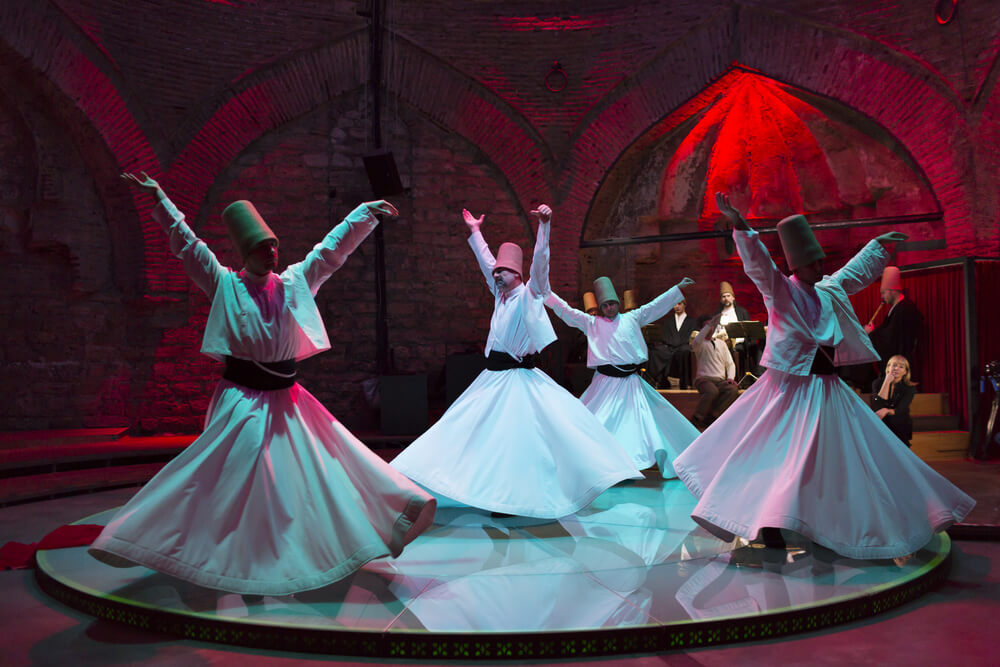
Feel the verve of the underrated Asian side at modish Kadikoy, as you bar-hop in Moda, explore mosques of Uskudar, and delve into Jewish architecture in Kuzguncuk. Learn to cook a Turkish meal at a local host’s mansion or take a gastronomic journey with a food walking tour, savouring local classics along with sherbet, ayran and raki. Surrender to ultimate indulgence with a complete afternoon in a luxurious Hammam. Later, rediscover your spiritual side with an authentic Mevlevi Sema Ceremony by the Whirling Dervishes at the Hodjapasha Cultural Centre. Dubb Indian Restaurant makes an ideal choice for some lip-smacking culinary fare.
Ajwa Hotel Sultanahmet
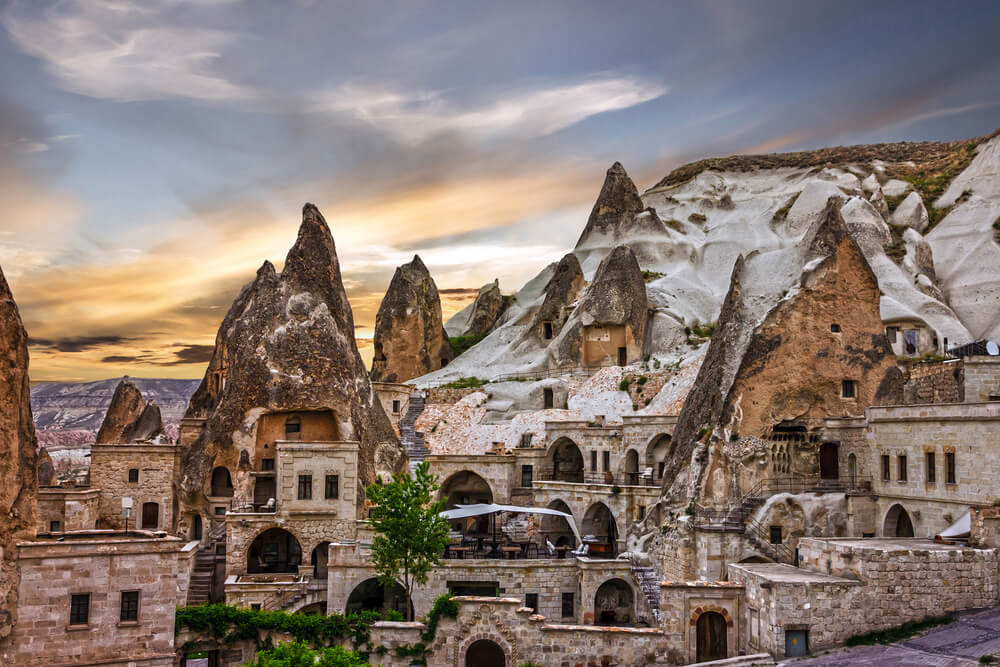
Search for the soul of Cappadocia in Cavusin’s fresco-laden Byzantine churches and the hilltop Church of St. John the Baptist. Drift into the world of surreal at the rock-cut churches, frescoes and wall paintings of Goreme Open Air Museum and mushroom-shaped Pasabag Fairy Chimneys, which once housed cave dwellings and chapels. Attend a pottery workshop with master craftsman Chez Galip at Avanos, Turkey’s ceramic capital and leave a hair lock in his quirky hair museum. Then flash-back to the days of the ancient Silk Route at the 13th-century Caravanserai of Sarihan.
Alia Cave Hotel

Flag off with a sunrise Hot Air Balloon Ride to float gently above the ethereal stony landscape of Cappadocia, made up of cave-mountains, rocky valleys and underground cities, sculpted by erosion over thousands of years. Ogle at fabulous landmarks of the area, starting with the Kaymakli Underground City, a labyrinth of rooms connected by tunnels over eight levels. Explore the wonders of insta-famous sites like the majestic Uchisar Castle, Love Valley, Cavusin Valley, and Valley of Doves. Romance rides high as you cross lush orchards and hermit-hideouts en route to Red Valley where pastel pink, yellow, and orange cliffs are at their hypnotic best at sunset.
Alia Cave Hotel
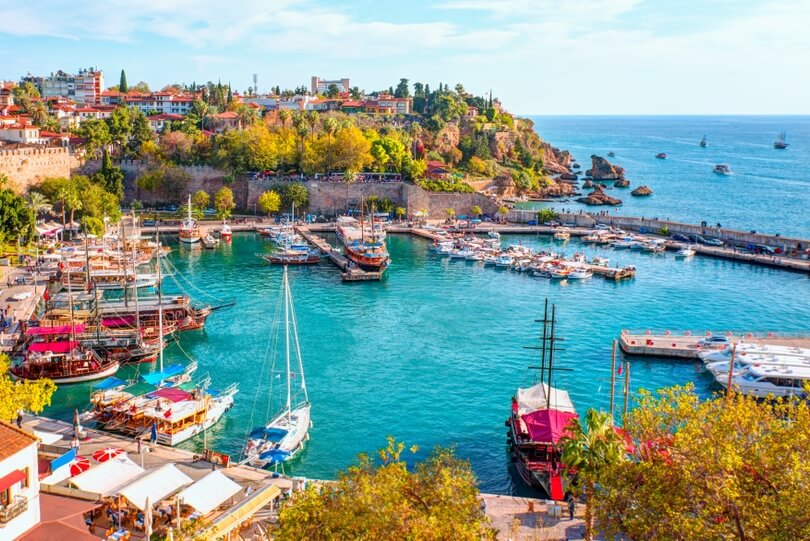
Prep for a glorious day at Antalya, gateway to the tantalizing Turquoise Coast. Be seduced by red-roofed Ottoman mansions in cobbled alleys of old town Kaleici and shop for artsy treasures in craft stores. After a round-up of Antalya’s highlights including Hadrian’s Gate, unwind at the Antalya Old Harbour & Marina. A meditative walk through Karaalioglu Park is best followed with a golden sunset from the Roman-era Hidirlik Tower. Think sensory overload over a gourmet dinner at Seraser Fine Dining Restaurant, housed in a 300-year-old mansion, perfectly showcasing the delightful Turkish resort city.
Titanic Mardan Palace
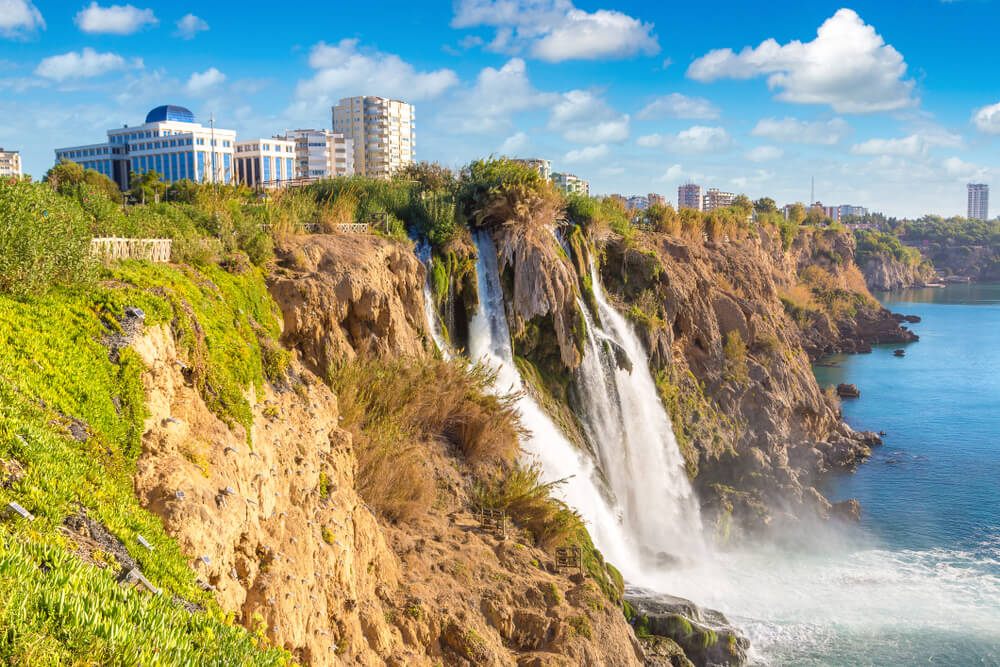
Plan to visit one of the biggest sand exhibitions in the world, the Sandland. Glide over pine forests in the Tunektepe Cable Car to reach a vantage point 1700m above the curving coastline. Then head to Duden Waterfalls to marvel at a natural gorge carved by a river, traverse scenic boardwalks and find a cave hidden behind a water curtain. After lunch, explore Karpuzkaldiran Waterfalls created by a river falling 40m into the Mediterranean Sea in a rainbow splash of water clouds. Lounge at Konyaalti Beach in the evening or walk with sea creatures through the world’s largest water tunnel at Antalya Aquarium.
Titanic Mardan Palace
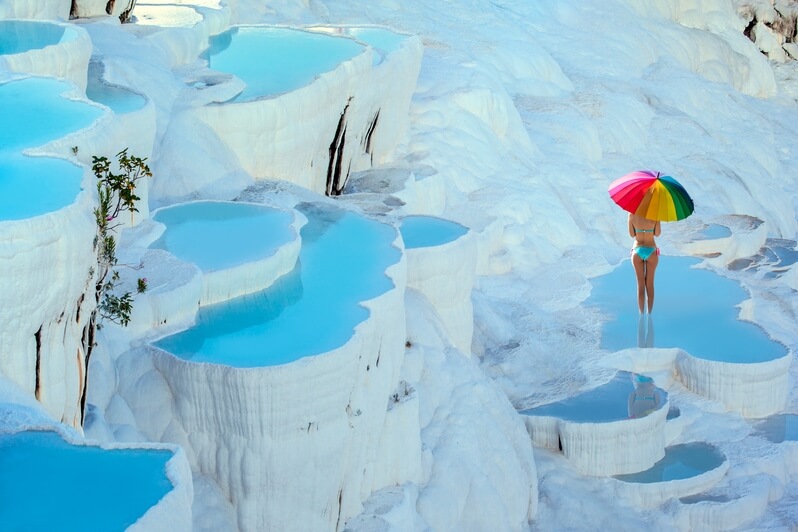
Drive along winding mountain roads to the archaeological site of Hierapolis, a Greco-Roman spa city dotted with temple ruins, a 12,000-seater Roman theater and a cemetery of 1200 tombs. A dramatic contrast awaits at Pamukkale, where thermal spring waters have been flowing off dazzling white travertine terraces since millions of years to create a spectacular ensemble of stalactites, cataracts and basins. Paddle in the pools and soak in the therapeutic hot springs for a wellness experience like never before. Later, swim in the soothing thermal waters of the Antique Pool favored by Cleopatra herself, where the backdrop of ornate Doric columns transports you back into Roman times.
Titanic Mardan Palace
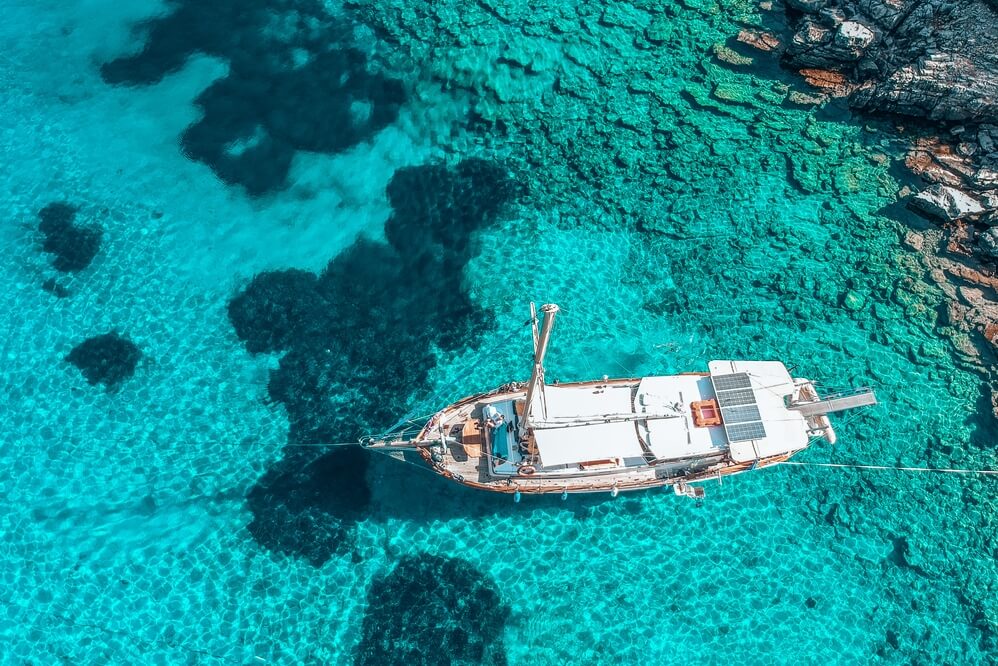
Taste idyll as you set foot on Bodrum, hub of the Turquoise Coast and St. Tropez of the Aegean. Unwind in your plush suite before heading out to live the Mediterranean dream in the seaside town dolled up with white-washed villas and hot pink bougainvillea. Shop for handcrafted leather bags and snack on spicy Gozleme before heading out for a hand-built timbered Gulet cruise. Don celeb-style as you drop anchor in pristine bays and swim in secluded inlets. At Orak Island, dive underwater to find an 80m vertical reef wall on the sea bed. In the evening, splurge your heart out on the upscale Yalikavak Marina. Close with breezy cocktails at the seafront nightclub, Fenix.
Hillstone Bodrum Hotel & Spa
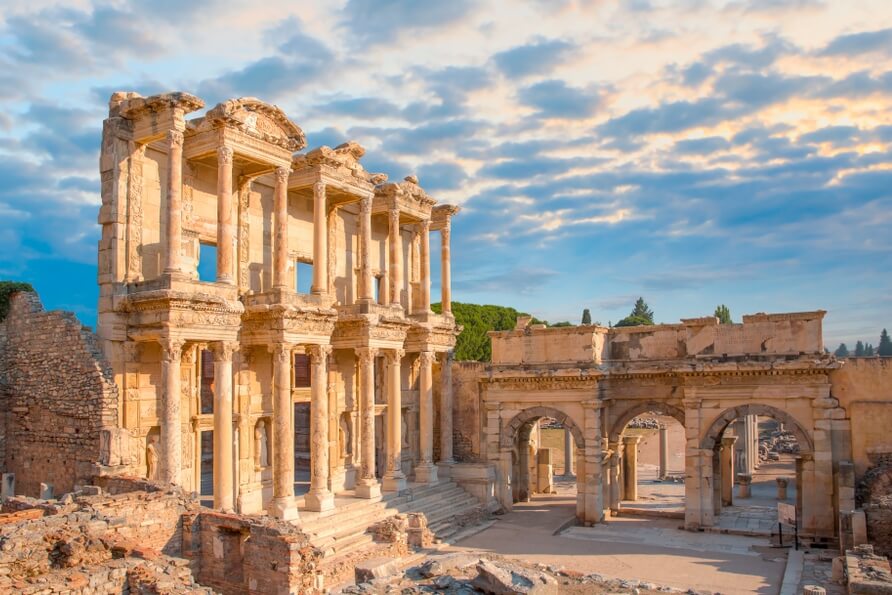
Bring on your inner history nerd with a full-day trip to Ephesus, one of the world’s largest and best-preserved ancient Roman cities, known for its Terrace Houses and the Celsus Library. Old-world charm drips from every brick at the 400-year-old mountain village of Sirince, known for locally made wine and olive oil soap, where you can enjoy an authentic Turkish lunch in a private home. Continue to the town of Selcuk to peep into the treasure-trove of the Ephesus Museum and trace the ruins of Temple of Artemis, one of the Seven Wonders of the Ancient World. En route, stop at the House of the Virgin Mary, a stone cottage turned chapel where Mary is believed to have lived her final days.
Hillstone Bodrum Hotel & Spa
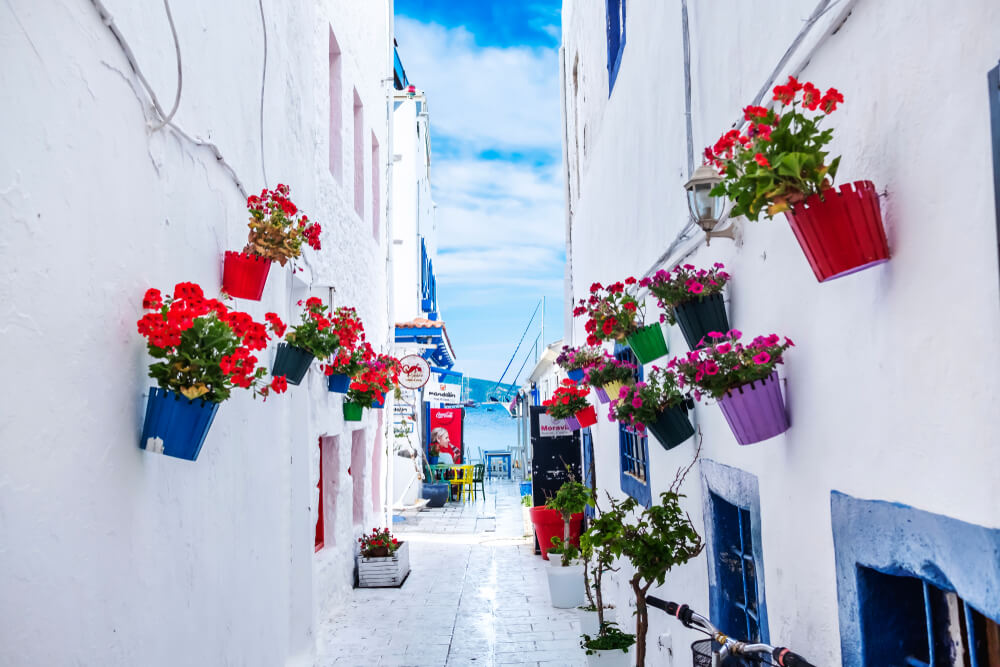
Be privy to another of the Seven Wonders of the Ancient World, the ruined Mausoleum of Mausolus in the old neighbourhood of Bodrum. Have a tete-a-tete with history at the Bodrum Castle of St Peter, drool over the impressive views from its elevated vantage point and see the world’s oldest sunken ship wreckage at its Museum of Underwater Archaeology. Spend the afternoon snorkelling over the submerged ruins of the ancient city of Gumusluk. Then celebrate Turkey like the locals with fresh seafood and flavour-packed meze at the hillside Cafe Limon under festoon-lit trees.
Hillstone Bodrum Hotel & Spa
